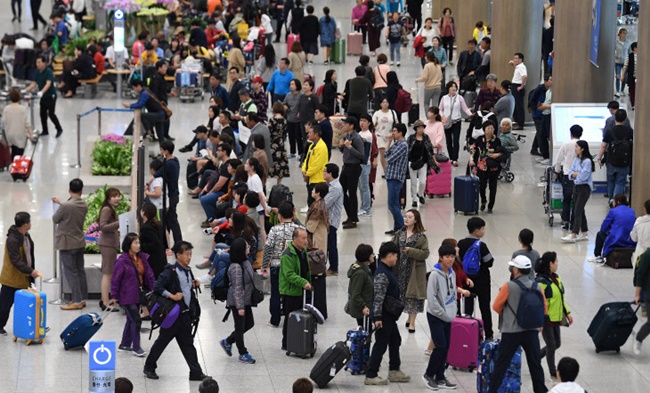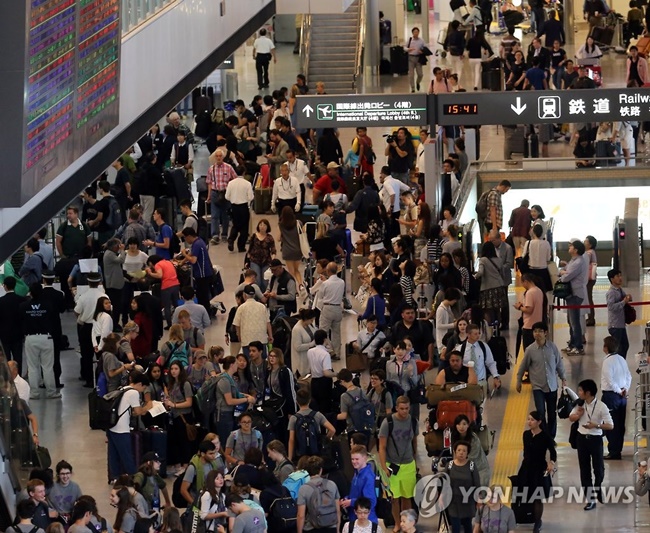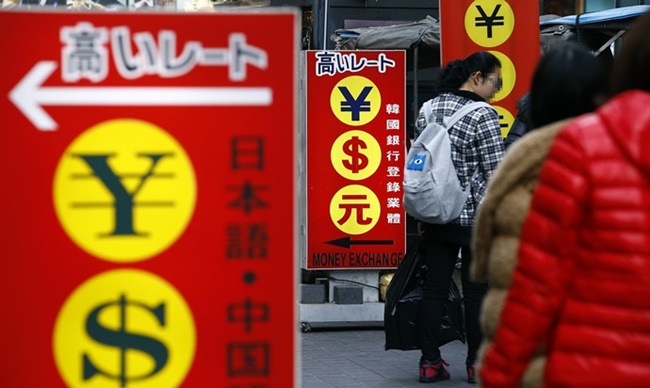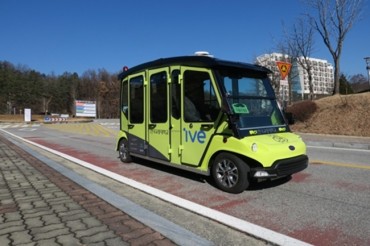
According to data provided by the Japan National Tourism Organization, a record high of over 5.2 million South Koreans visited Japan between January and September this year, up over 40 percent compared to the same time last year. (Image: Yonhap)
SEOUL, Oct. 31 (Korea Bizwire) – The gap continues to widen between the number of South Korean visitors to Japan and South Korea-bound Japanese tourists, sending alarming signs of the troubles facing the South Korean tourism industry and prompting tourism officials in South Korea to ramp up efforts to encourage domestic tourism.
According to data provided by the Japan National Tourism Organization, a record high of over 5.2 million South Koreans visited Japan between January and September this year, up over 40 percent compared to the same time last year.
In the meantime, the number of Japanese tourists who visited South Korea between January and August stood at just over 1.5 million, according to the Korea Tourism Organization (KTO).
When the populations of both countries are thrown into the equation, the gap appears to be even more striking, making one wonder what is driving the disparity between the inbound and outbound tourism figures between South Korea and Japan.
As nearly 7 million South Koreans are expected to visit Japan this year, tourism industry sources say behind the record-breaking figure is the political tension with China surrounding the deployment of politically charged THAAD anti-missile systems, as many South Korean opted out of going to China and instead headed east instead.
“Until early this year, the South Korean public favored China as a tourist destination, but the growing anti-Korean sentiment over political tensions between the two countries has seen South Korean tourists visit Japan instead,” an official at the KTO said.
Though some pay attention to the psychological impact of political tension on tourists, others say it’s a weaker yen that is working in favor of the Japanese tourism industry, coupled with the government’s push to reach 40 million incoming tourists by 2020, when the Summer Olympic Games will be held in Tokyo, by relaxing visa regulations and offering tax benefits to foreign tourists.

The gap continues to widen between the number of South Korean visitors to Japan and South Korea-bound Japanese tourists, sending alarming signs of the troubles facing the South Korean tourism industry and prompting tourism officials in South Korea to ramp up efforts to encourage domestic tourism. (Image: Yonhap)
While tens of thousands of South Koreans travel to Japan every month, the inbound tourism figure from Japan was significantly lower, which many believe was due to the tension surrounding the Korean peninsula over provocation from North Korea, including a series of missile tests.
According to Lee Kang-wook, a senior researcher at the Korea Culture and Tourism Institute, Japanese tourists have been traditionally been sensitive to tensions caused by North Korea.
“Japanese tourists have proven to be sensitive when tensions were high between South Korea and North Korea, including the ROKS Cheonan sinking, as well as the bombardment of Yeongpyeong,” Lee said.
Since 2012, when the number of Japanese visitors to South Korea was estimated at 3.5 million, surpassing the figure of South Koreans visiting Japan by more than a million, tourist preferences have headed in opposite directions.
While the figure for Japanese tourists to South Korea declined steadily, the number of South Korean visitors to Japan continued to increase in the last few years.
Against this background, some say the growing outbound tourism gap between the two countries paints a much bigger picture than the THAAD issue and a weaker yen, such as South Korea’s heavy reliance on a narrow range of attractions including K-pop and shopping, both of which the government has been pushing as main selling points.

When the populations of both countries are thrown into the equation, the gap appears to be even more striking, making one wonder what is driving the disparity between the inbound and outbound tourism figures between South Korea and Japan. (Image: Yonhap)
Jeon Hyo-sik, the head of the international tourism department at the KTO says diversifying the market and creating new content are both crucial in making tourism in South Korea more attractive, adding that the KTO is investing in tourism infrastructure and running target audience marketing campaigns to better promote the industry.
“Focusing far too much on one demographic can hinder the South Korean tourism industry from appealing to a wider audience,” Jun said.
Hyunsu Yim (hyunsu@koreabizwire.com)






![[Kobiz Stats] Ratio of Experiencing Cyber-Bullying and Cyber-Bullied [Kobiz Stats] Ratio of Experiencing Cyber-Bullying and Cyber-Bullied](http://koreabizwire.com/wp/wp-content/uploads/2014/04/사이버불링-영문-370x503.jpg)